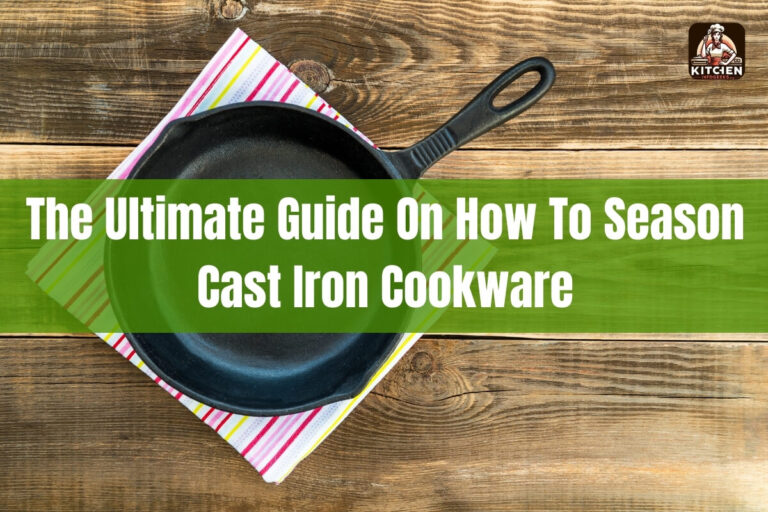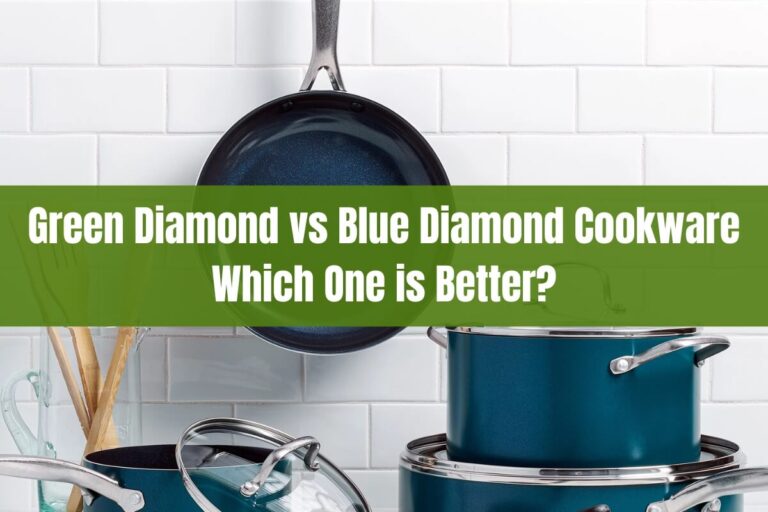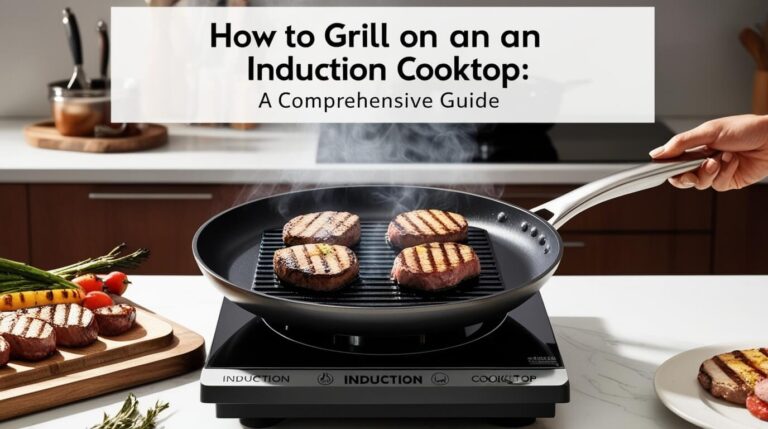
Induction cookware refers to pots and pans designed specifically for use with induction cooktops or ranges. These specialized cooking vessels have a magnetic base that allows them to heat up directly on the induction surface, providing efficient and precise cooking capabilities. This blog post will delve into the world of induction cookware, exploring its unique features, materials, benefits, and how to identify compatible options.
Induction cooking has gained significant popularity in recent years, particularly among professional chefs and home cooks seeking energy-efficient and high-performance cooking solutions. By understanding what induction cookware is and how it works, you can make an informed decision when upgrading your kitchen equipment.
Understanding Induction Cooking Technology
Before diving into induction cookware specifics, it’s essential to grasp the underlying technology behind induction cooking. Unlike traditional gas or electric stoves, induction cooktops generate heat through an electromagnetic field created by copper coils beneath the cooking surface.
When you place compatible cookware on the induction cooktop, the magnetic field induces a concentrated electrical current within the pot or pan’s magnetic base. This current generates heat directly in the cookware, allowing for efficient and precise heat transfer to the food inside.
One of the key advantages of induction cooking is its energy efficiency. Since the heat is generated directly in the cookware, there is minimal heat loss, resulting in faster cooking times and lower energy consumption compared to traditional cooking methods.
Additionally, induction cooktops offer unparalleled temperature control. The heat level can be adjusted instantly and accurately, making it easier to maintain consistent cooking temperatures and prevent overcooking or burning.
The Essence of Induction Cookware
Induction cookware is specifically designed to work with induction cooktops or ranges. The defining characteristic of induction cookware is its magnetic base, which allows it to interact with the electromagnetic field generated by the induction cooktop.
The most common materials used in induction cookware are:
- Cast iron: A classic choice for induction cooking, cast iron pots and pans are naturally magnetic and excellent heat conductors, making them well-suited for induction cooktops.
- Steel: Certain types of steel, such as carbon steel and blue steel, are magnetic and compatible with induction cooking.
- Magnetic stainless steel: While regular stainless steel may not be magnetic, some stainless steel cookware is designed with a magnetic base layer, allowing it to work on induction cooktops.
Regardless of the material, the key requirement for induction cookware is a flat, magnetic base that can effectively interact with the electromagnetic field generated by the cooktop.
Cast Iron: The Classic Induction Cookware
Cast iron cookware has been a staple in kitchens for centuries, and it’s no surprise that it’s an excellent choice for induction cooking. Cast iron is naturally magnetic, making it compatible with induction cooktops. It’s also known for its excellent heat retention and even heat distribution, ensuring consistent cooking results.
When using cast iron induction cookware, it’s important to properly season and maintain the surface to prevent rust and ensure a non-stick cooking experience. Regular cleaning and seasoning with a small amount of oil or cooking spray can help preserve the cookware’s quality and longevity.
Stainless Steel Induction Cookware
Stainless steel is another popular material for induction cookware. While not all stainless steel is magnetic, many manufacturers now produce stainless steel cookware with a magnetic base layer, specifically designed for induction cooking.
Stainless steel induction cookware offers several advantages, including:
- Durability and scratch resistance
- Easy to clean and maintain
- Even heat distribution
- Attractive and sleek appearance
However, it’s important to note that not all stainless steel cookware is induction-compatible. Some high-nickel stainless steel alloys may not work with induction cooktops, so it’s essential to check for induction compatibility before making a purchase.
Enameled and Ceramic-Clad Induction Cookware
Enameled and ceramic-clad cookware are also compatible with induction cooking, thanks to their magnetic base layers. These types of cookware offer a colorful and aesthetically pleasing appearance while combining the benefits of induction cooking with non-stick properties and easy cleaning.
Enameled cast iron cookware, for instance, combines the durability and heat retention of cast iron with a glossy, enamel coating that prevents rusting and makes cleaning easier.
Ceramic-clad cookware, on the other hand, typically features an aluminum or copper core sandwiched between layers of magnetic stainless steel and a ceramic coating. This construction provides excellent heat distribution and a non-stick cooking surface.
Identifying Induction-Compatible Cookware
With a wide range of cookware options available on the market, it’s crucial to know how to identify if a pot or pan is compatible with induction cooking. Here’s a simple test you can perform:
The Magnet Test: Take a standard refrigerator magnet and hold it against the bottom of the cookware. If the magnet firmly sticks to the base, the cookware is likely induction-compatible. If the magnet doesn’t stick or only clings weakly, the cookware may not be suitable for induction cooking.
Additionally, many manufacturers now include an “induction compatible” symbol or marking on the bottom or packaging of their induction-ready cookware. This symbol typically resembles a coil or a magnetic field, making it easier for consumers to identify compatible products.
Caring for Your Induction Cookware
Proper care and maintenance are essential to ensure the longevity and optimal performance of your induction cookware. While the cleaning methods for induction cookware are generally similar to those for regular cookware, there are a few additional considerations:
- Hand washing: It’s recommended to hand wash induction cookware instead of using a dishwasher to prevent damage to the magnetic base or non-stick surfaces.
- Avoid abrasive scrubbers: Use non-abrasive sponges or soft cloths to clean induction cookware, as abrasive materials can scratch or damage the surface.
- Dry thoroughly: Always dry your induction cookware completely after washing to prevent water spots and maintain its appearance.
- Use plastic or wooden utensils: Avoid using metal utensils as they can scratch the surface of the cookware, especially with non-stick coatings.
By following these simple care instructions, you can ensure that your induction cookware remains in top condition for years to come.
Induction Cookware vs. Regular Cookware
While induction cookware is designed specifically for use with induction cooktops, it’s important to understand the differences between induction and regular cookware.
The primary distinction lies in the magnetic base of induction cookware. Regular cookware, such as non-magnetic stainless steel, aluminum, or copper pots and pans, cannot interact with the electromagnetic field generated by induction cooktops and will not heat up.
However, the good news is that induction cookware can be used on regular gas or electric stoves without any issues. The magnetic base of induction cookware does not affect its performance on non-induction cooking surfaces.
Top Brands for Induction Cookware
As induction cooking continues to gain popularity, many reputable cookware brands have introduced induction-compatible product lines to cater to this growing market. Here are a few notable brands known for their high-quality induction cookware:
- All-Clad: Known for their tri-ply construction and durable stainless steel cookware, All-Clad offers a range of induction-compatible collections, including the D3 and D5 lines.
- Le Creuset: Famous for their enameled cast iron cookware, Le Creuset’s induction-compatible offerings combine classic design with modern technology, ensuring even heat distribution and excellent heat retention.
- Scanpan: Scanpan specializes in high-quality, non-stick cookware, with several induction-compatible collections featuring patented ceramic titanium coatings and durable construction.
- Zwilling J.A. Henckels: This German brand is renowned for its high-quality knives and cookware, including a range of induction-compatible stainless steel and non-stick options.
When shopping for induction cookware, it’s essential to consider factors such as material, construction quality, and heat distribution capabilities to ensure a worthwhile investment that meets your cooking needs.
Conclusion
Induction cookware is a must-have for anyone looking to enjoy the benefits of efficient, precise, and responsive induction cooking. By understanding the unique characteristics of induction cookware, such as its magnetic base and compatible materials, you can make informed decisions when upgrading your kitchen equipment.
Remember, the key to successful induction cooking lies in using cookware specifically designed for induction cooktops, ensuring optimal heat transfer and consistent cooking results. With the right induction cookware and a little care, you






